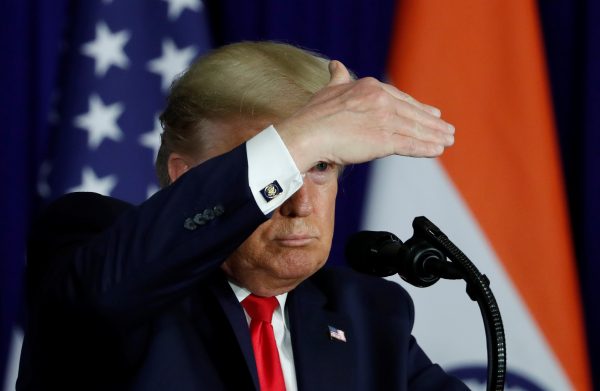Yet, President Donald Trump’s freewheeling refusal to be bound within this policy framework has rendered the Indo-Pacific concept of limited utility to the US government. It is misleading to speak in terms of Trump administration policies and strategies as opposed to attitudes and tendencies.
This is reflected in the President’s preference for bilateral over multilateral agreements, his hostility to trade deficits, his conviction that US allies should bear a greater share of the mutual defence burden, his predilection for summit diplomacy and his readiness to criticise allies while cultivating relationships with authoritarian leaders.
Still, the US Congress demonstrated its support for the Trump administration’s Indo-Pacific approach by passing the Asia Reassurance Initiative Act of 2018 and the BUILD Act, which created the US International Development Finance Corporation. These acts were passed with strong bipartisan support, reflecting the negative sentiment in Congress towards China. In addition, the Trump administration showed renewed interest in the Quadrilateral Security Dialogue among Australia, India, Japan and the United States.
In the South China Sea, driven in large measure by China’s provocative transformation of rocks and shoals in the Spratlys into sizeable artificial islands, the Trump administration showed a preference for freedom of navigation operations and joint military exercises over diplomacy. This kept the South China Sea as a potential flash point for naval incidents between China and the United States.
There is a broad consensus within the Trump administration and among members of Congress that the United States is locked in an ‘existential’ struggle with a hostile China intent on shifting the global and regional balance of power. Based on such assumptions, US national strategy documents describe China as the principal threat to the United States in an international arena marked by competition. But in practice, the Trump administration’s approach to the region has reflected the proclivities of the President.
With engagement discredited as a policy approach, significant segments of the US policy community have defaulted to confrontation as the preferred method for limiting China’s rise. This is seen most clearly in the administration’s launching of a mutually damaging tariff war with China in an effort to force Beijing to address US trade and economic concerns. In addition, it has tightened its scrutiny of Chinese investments in the United States.
Against this backdrop, the Trump administration has not adequately addressed two key strategic issues associated with China’s rise. The first is the shifting military balance in the Western Pacific. The second is the question of the US relationship with Taiwan.
The rapid pace of Chinese military modernisation is already eroding US air and naval dominance in the Western Pacific. This presents the United States with a critically important strategic choice: Should the United States seek to preserve air and sea dominance in the Western Pacific or seek a sustainable military balance between China and the United States?
In the first case, by not weighing the alternatives, the Trump administration is opting for an arms race. In the second case, the United States would need to preserve a military presence in the Western Pacific sufficient to deter intimidating Chinese behaviour and to maintain the credibility of its alliance commitments.
In the case of Taiwan, Beijing has repeatedly made clear that it is prepared to use military force to keep Taiwan within a ‘one-China’ framework. Developing military capabilities geared to this objective has been a primary driver of China’s military modernisation.
Given Taiwan’s current situation of full self-governance, the United States has a strong national interest in preserving a status quo based on a one-China framework. The Trump administration has endorsed this framework, but its actions have not been fully consistent with it.
As the end of President Trump’s first term in office approaches, the administration has a mixed record in the region. The trade war with China has been temporarily capped but not resolved. The North Korean nuclear issue remains a smouldering powder keg. Relations between South Korea and Japan have deteriorated to a disturbing degree. By repudiating the Trans-Pacific Partnership, the administration has forfeited the US leadership role in establishing multilateral rules and institutions for regulating regional trade. It has also not laid to rest doubts concerning the steadfastness of US commitment to regional engagement, especially in non-military areas. The coronavirus pandemic in China has introduced new uncertainties into the outlook.
On the positive side, the signing of the ‘phase-one’ US trade deal with China in January laid the groundwork for avoiding a trade crisis with China, at least through to the US presidential elections in November. If this truce holds, North Korea does not resume nuclear or long-range missile testing and the Trump administration does not inadvertently overstep red lines in its relationship with Taiwan, the administration can heave a sigh of relief. What will be missing is a stable basis for addressing regional issues in the years ahead.
Ambassador J Stapleton Roy is Founding Director Emeritus and Distinguished Fellow at the Wilson Center’s Kissinger Institute on China and the United States. He is a former US diplomat specialising in Asian affairs, with postings in Bangkok, Hong Kong, Taipei, Beijing, Singapore and Jakarta. Ambassador Roy served as Assistant Secretary of State for Intelligence and Research from 1999–2000.

